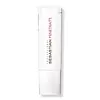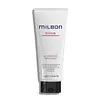What's inside
What's inside
 Benefits
Benefits

 Concerns
Concerns

 Ingredients Side-by-side
Ingredients Side-by-side

Water
Skin ConditioningStearyl Alcohol
EmollientBehentrimonium Chloride
PreservativeCetyl Alcohol
EmollientBis-Aminopropyl Dimethicone
Isopropyl Alcohol
SolventParfum
MaskingBenzyl Alcohol
PerfumingPhenoxyethanol
PreservativeMethylparaben
PreservativePropylparaben
PreservativeDisodium EDTA
Cyclomethicone
EmollientHexyl Cinnamal
PerfumingHydroxyisohexyl 3-Cyclohexene Carboxaldehyde
MaskingCyclotetrasiloxane
EmollientHydrolyzed Silk
HumectantOryza Sativa Bran Oil
EmollientSimmondsia Chinensis Seed Oil
EmollientPropylene Glycol
HumectantAstragalus Gummifer Gum
Emulsion StabilisingWater, Stearyl Alcohol, Behentrimonium Chloride, Cetyl Alcohol, Bis-Aminopropyl Dimethicone, Isopropyl Alcohol, Parfum, Benzyl Alcohol, Phenoxyethanol, Methylparaben, Propylparaben, Disodium EDTA, Cyclomethicone, Hexyl Cinnamal, Hydroxyisohexyl 3-Cyclohexene Carboxaldehyde, Cyclotetrasiloxane, Hydrolyzed Silk, Oryza Sativa Bran Oil, Simmondsia Chinensis Seed Oil, Propylene Glycol, Astragalus Gummifer Gum
Water
Skin ConditioningCetyl Alcohol
EmollientDimethicone
EmollientBehentrimonium Chloride
PreservativePropylene Glycol
HumectantAmodimethicone
Stearyl Alcohol
EmollientOlea Europaea Fruit Oil
MaskingCholesteryl Lanolate
Skin ConditioningIsostearoyl Hydrolyzed Silk
Skin ConditioningHydroxyethylcellulose
Emulsion StabilisingCarboxymethyl Alanyl Disulfide Keratin
Laurdimonium Hydroxypropyl Hydrolyzed Keratin
Skin ConditioningIsostearic Acid
CleansingLauryl Betaine
CleansingSteartrimonium Chloride
PreservativeDistearyldimonium Chloride
Dicocodimonium Chloride
EmulsifyingButylene Glycol
HumectantIsopropyl Alcohol
SolventAlcohol
AntimicrobialAminomethyl Propanol
BufferingEtidronic Acid
Phenoxyethanol
PreservativeParfum
MaskingHexyl Cinnamal
PerfumingLinalool
PerfumingWater, Cetyl Alcohol, Dimethicone, Behentrimonium Chloride, Propylene Glycol, Amodimethicone, Stearyl Alcohol, Olea Europaea Fruit Oil, Cholesteryl Lanolate, Isostearoyl Hydrolyzed Silk, Hydroxyethylcellulose, Carboxymethyl Alanyl Disulfide Keratin, Laurdimonium Hydroxypropyl Hydrolyzed Keratin, Isostearic Acid, Lauryl Betaine, Steartrimonium Chloride, Distearyldimonium Chloride, Dicocodimonium Chloride, Butylene Glycol, Isopropyl Alcohol, Alcohol, Aminomethyl Propanol, Etidronic Acid, Phenoxyethanol, Parfum, Hexyl Cinnamal, Linalool
Ingredients Explained
These ingredients are found in both products.
Ingredients higher up in an ingredient list are typically present in a larger amount.
This ingredient is a preservative and often used for it's anti-static properties. You'll most likely see this ingredient in hair conditioners.
It does not cause irritation or sensitization in leave-on products at 1-5%.
Cetyl Alcohol is a fatty alcohol. Fatty Alcohols are most often used as an emollient or to thicken a product.
Its main roles are:
Though it has "alcohol" in the name, it is not related to denatured alcohol or ethyl alcohol.
The FDA allows products labeled "alcohol-free" to have fatty alcohols.
Learn more about Cetyl AlcoholHexyl Cinnamal is a fragrance ingredient with a similar scent to jasmine. It can be naturally found in chamomile essential oil.
This ingredient is a known EU allergen and may sensitize the skin. The EU requires this ingredient to be listed separately on an ingredients list.
Hexyl Cinnamal is not water soluble but is soluble in oils.
Learn more about Hexyl CinnamalIsopropyl Alcohol is more commonly known as rubbing alcohol. It is most commonly used as a solvent, meaning it helps other ingredients dissolve.
This ingredient is an astringent alcohol. Astringent alcohols may also irritate skin as they high amounts may strip away your skin's natural oils.
Other types of astringent alcohols include:
According to the National Rosacea Society based in the US, you should be mindful of products with these alcohols in the top half of ingredients.
Any type of sanitizing product will have high amounts of alcohol to help kill bacteria and viruses.
Learn more about Isopropyl AlcoholParfum is a catch-all term for an ingredient or more that is used to give a scent to products.
Also called "fragrance", this ingredient can be a blend of hundreds of chemicals or plant oils. This means every product with "fragrance" or "parfum" in the ingredients list is a different mixture.
For instance, Habanolide is a proprietary trade name for a specific aroma chemical. When used as a fragrance ingredient in cosmetics, most aroma chemicals fall under the broad labeling category of “FRAGRANCE” or “PARFUM” according to EU and US regulations.
The term 'parfum' or 'fragrance' is not regulated in many countries. In many cases, it is up to the brand to define this term.
For instance, many brands choose to label themselves as "fragrance-free" because they are not using synthetic fragrances. However, their products may still contain ingredients such as essential oils that are considered a fragrance by INCI standards.
One example is Calendula flower extract. Calendula is an essential oil that still imparts a scent or 'fragrance'.
Depending on the blend, the ingredients in the mixture can cause allergies and sensitivities on the skin. Some ingredients that are known EU allergens include linalool and citronellol.
Parfum can also be used to mask or cover an unpleasant scent.
The bottom line is: not all fragrances/parfum/ingredients are created equally. If you are worried about fragrances, we recommend taking a closer look at an ingredient. And of course, we always recommend speaking with a professional.
Learn more about ParfumPhenoxyethanol is a preservative that has germicide, antimicrobial, and aromatic properties. Studies show that phenoxyethanol can prevent microbial growth. By itself, it has a scent that is similar to that of a rose.
It's often used in formulations along with Caprylyl Glycol to preserve the shelf life of products.
Propylene Glycol is an odorless, colorless liquid. As a humectant, it helps skin retain moisture. It also aids in delivering active ingredients.
Another role of this ingredient is preventing a product from melting or freezing. Propylene glycol also adds antimicrobrial properties to a product, elongating product lifespan.
This ingredient is considered an organic alcohol and commonly added into both cosmetics and foods.
Those with sensitive skin or conditions may develop a rash when using this ingredient.
Learn more about Propylene GlycolStearyl Alcohol is a type of fatty alcohol from stearic acid. It is a white, waxy compound used to emulsify ingredients.
Fatty Alcohols are most often used as an emollient or to thicken a product. Emollients help soothe and hydrate the skin by trapping moisture.
They are usually derived from natural fats and oils and therefore do not have the same drying or irritating effect as solvent alcohols. FDA allows products labeled "alcohol-free" to have fatty alcohols.
Learn more about Stearyl AlcoholWater. It's the most common cosmetic ingredient of all. You'll usually see it at the top of ingredient lists, meaning that it makes up the largest part of the product.
So why is it so popular? Water most often acts as a solvent - this means that it helps dissolve other ingredients into the formulation.
You'll also recognize water as that liquid we all need to stay alive. If you see this, drink a glass of water. Stay hydrated!
Learn more about Water